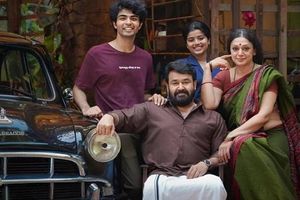The excitement is palpable as the 45th London Marathon kicks off on April 27, 2025, with a staggering 56,000 runners taking to the streets of the capital. This year, the marathon is expected to attract crowds of up to 750,000 spectators, making it one of the largest marathons in the world. With such a massive turnout, both on the course and in the stands, the atmosphere is electric, promising a day filled with inspiring stories and incredible feats of endurance.
Among the many participants is former women’s marathon world record holder Paula Radcliffe’s daughter, Isla Radcliffe. Paula has been providing Isla with advice as she prepares for her run, although Isla has reportedly taken more guidance from coach Steve. “A bigger question is how much advice does she want to take?” Paula remarked during an interview. “She has been offered a lot. Like most teenagers, she doesn't want to listen to mum and dad that much. I have no cares how long it takes her to come around. I just want to see her smiling coming up the Mall.”
The London Marathon is not just a race; it’s a celebration of determination and community spirit. Runners from all walks of life come together for various reasons, whether personal challenges, charity fundraising, or simply the love of running. As the author of an article reflecting on the marathon experience notes, the camaraderie and dedication displayed by both runners and supporters create a unique atmosphere. “There’s a remarkable generosity of spirit on display along every yard of the course,” they write, emphasizing how the crowds cheer for both loved ones and complete strangers alike.
For many, the marathon represents much more than just crossing the finish line. Some participants are running to raise awareness for important causes or to honor loved ones. Tanzeela Khalid, a teacher from Birmingham, shared her motivation: “As a hijabi and a woman of colour, I rarely see myself represented in running groups. I work as a teacher at an inner-city primary school in Birmingham, where a large portion of the students come from Arab, Black, and South Asian backgrounds. Many of these children do not see themselves reflected in sports... it’s a powerful way to demonstrate that running is inclusive and accessible to everyone, regardless of background.”
Similarly, Dylan Wing, a PE teacher at an all-girls school in London, is running to inspire his students: “Girls drop out of sport at almost twice the rate of boys... I hope I can be an inspiration for both my students and their families to not just continue to train and run but also lead a healthy life.”
The marathon also poses significant physical and mental challenges for the participants. Runners must train for months, often enduring grueling workouts and overcoming injuries. The race itself can be daunting, with the infamous “wall” looming around mile 20, a point where many runners feel they can’t continue. The author humorously reflects on the risks involved, noting that despite the extensive preparation, a runner can still face unforeseen challenges on race day, such as injuries or even bathroom emergencies.
Yet, despite the risks and challenges, the allure of the marathon continues to draw participants. The author, who is running the London Marathon for the second time, reflects on their journey with the Kent AC athletics club, where they found a supportive community that transformed their enjoyment of running into a passion. “I got hooked after joining Kent AC, a Lewisham-based athletics club. The camaraderie and expertise of my fellow runners has turned an enjoyment of the sport into a full-blown addiction,” they share.
As the marathon unfolds, it’s not just about the runners; the spectators play a crucial role in creating the marathon atmosphere. The crowds, often numbering in the hundreds of thousands, cheer on the runners with enthusiasm, shouting names and encouraging words. This support can provide a much-needed boost to tired runners, as the author experienced during last year’s race when hearing their name called out by strangers gave them a surge of energy.
In essence, the London Marathon is a testament to human endurance, community, and the spirit of giving. It embodies the idea that everyone, whether running for personal achievement or to support a cause, is contributing to something greater than themselves. The dedication and effort displayed by both the runners and the spectators create a sense of unity and purpose that resonates long after the race is over.
As the day approaches, anticipation builds not just for the race itself but for the stories that will emerge from it. Each runner has a unique journey, and as they all gather in London, they become part of a larger narrative about perseverance and hope. The London Marathon is more than just a race; it’s a celebration of life, community, and the human spirit.






